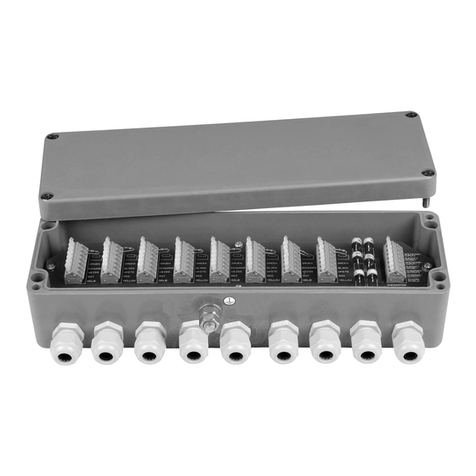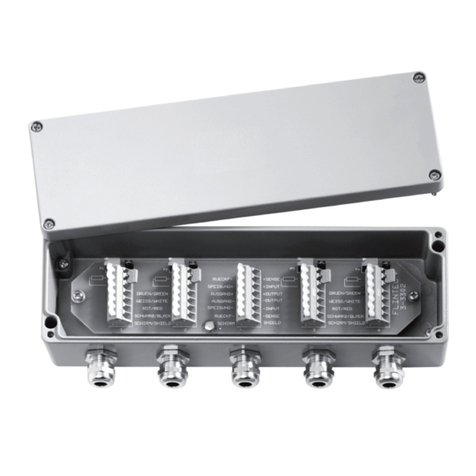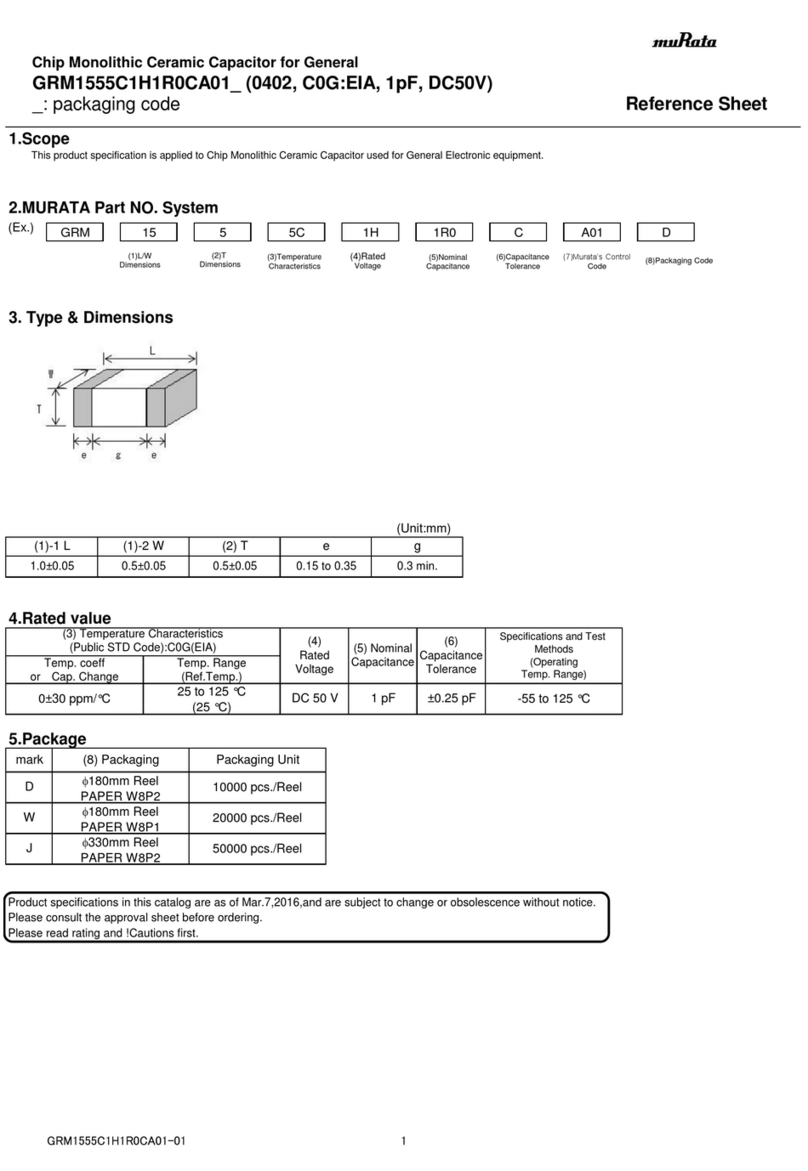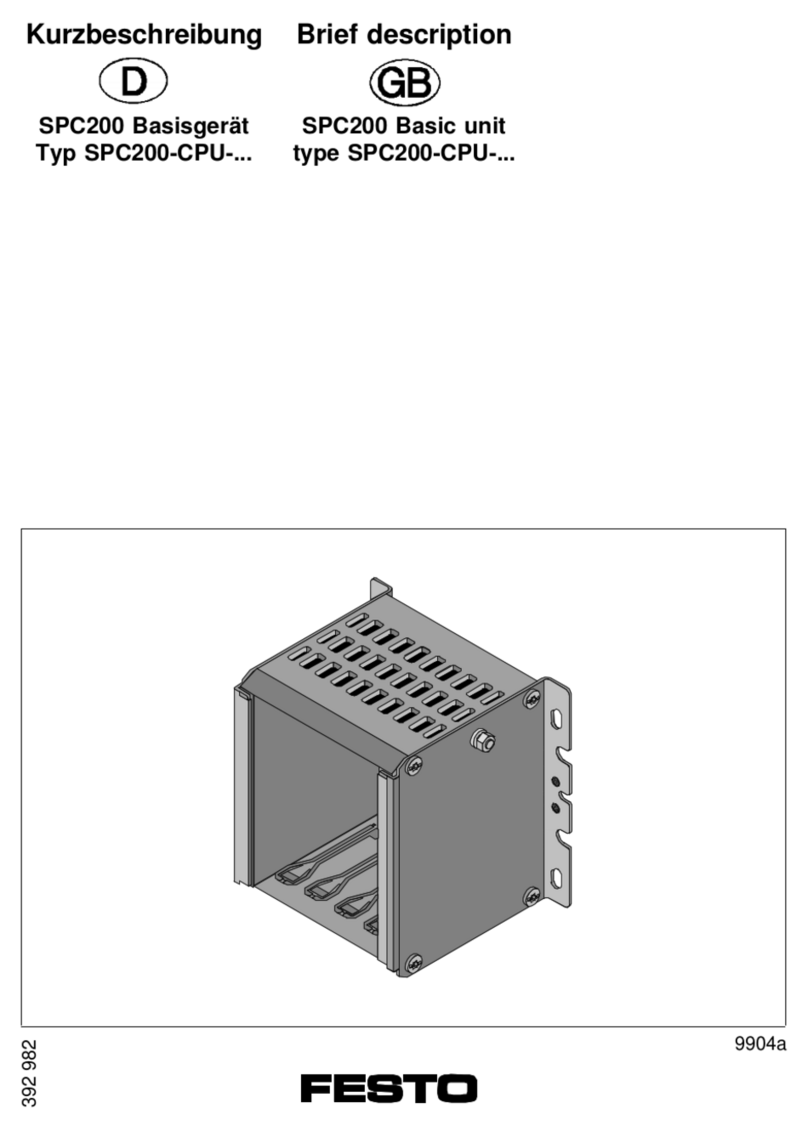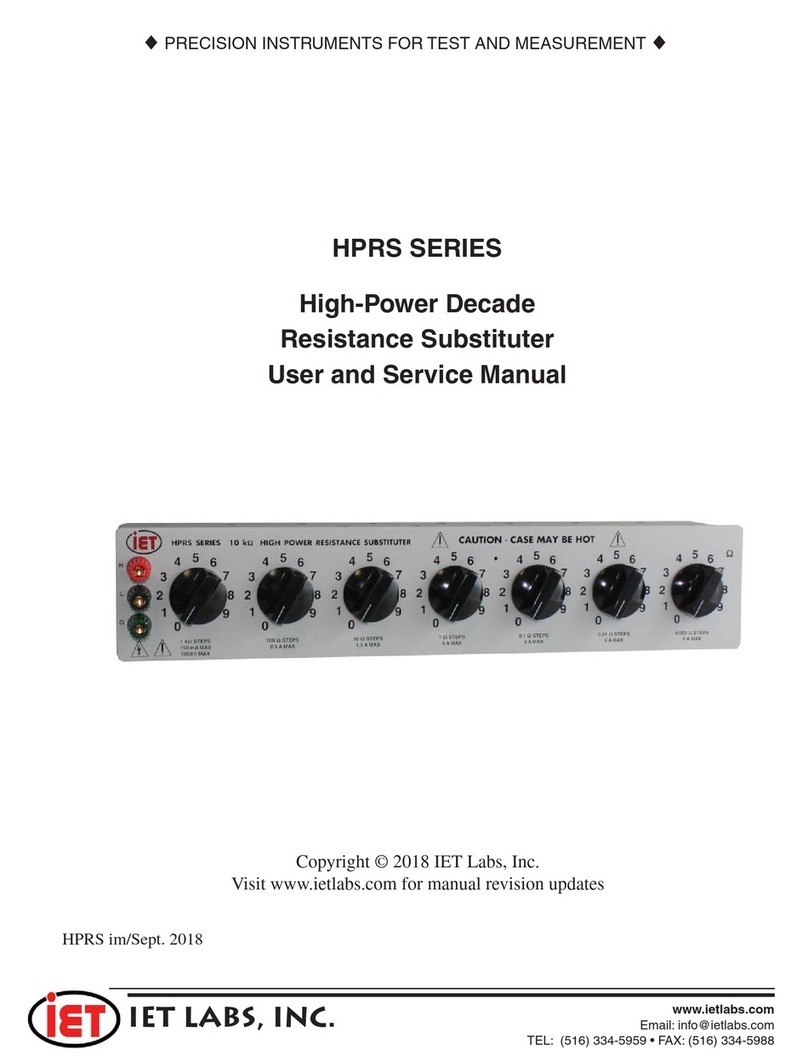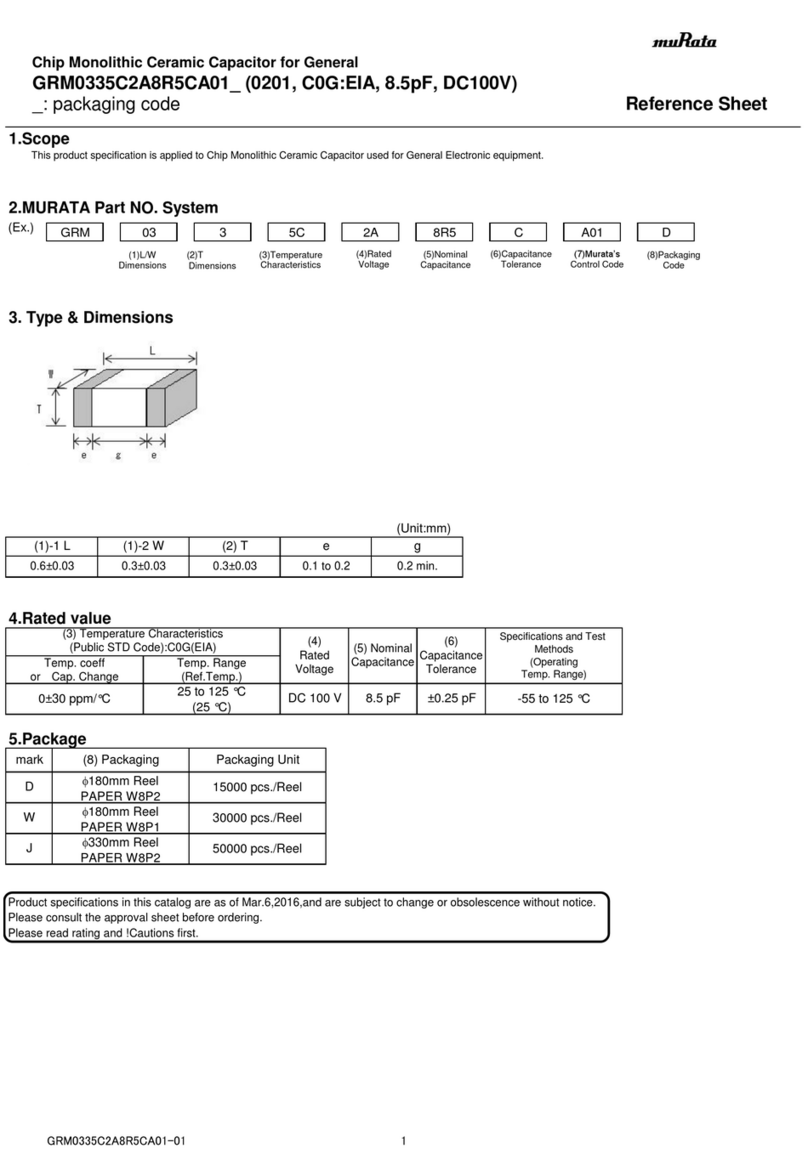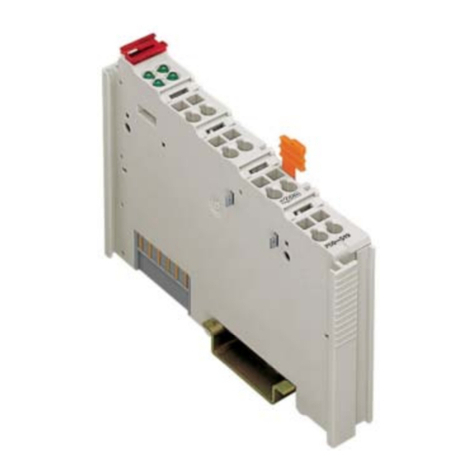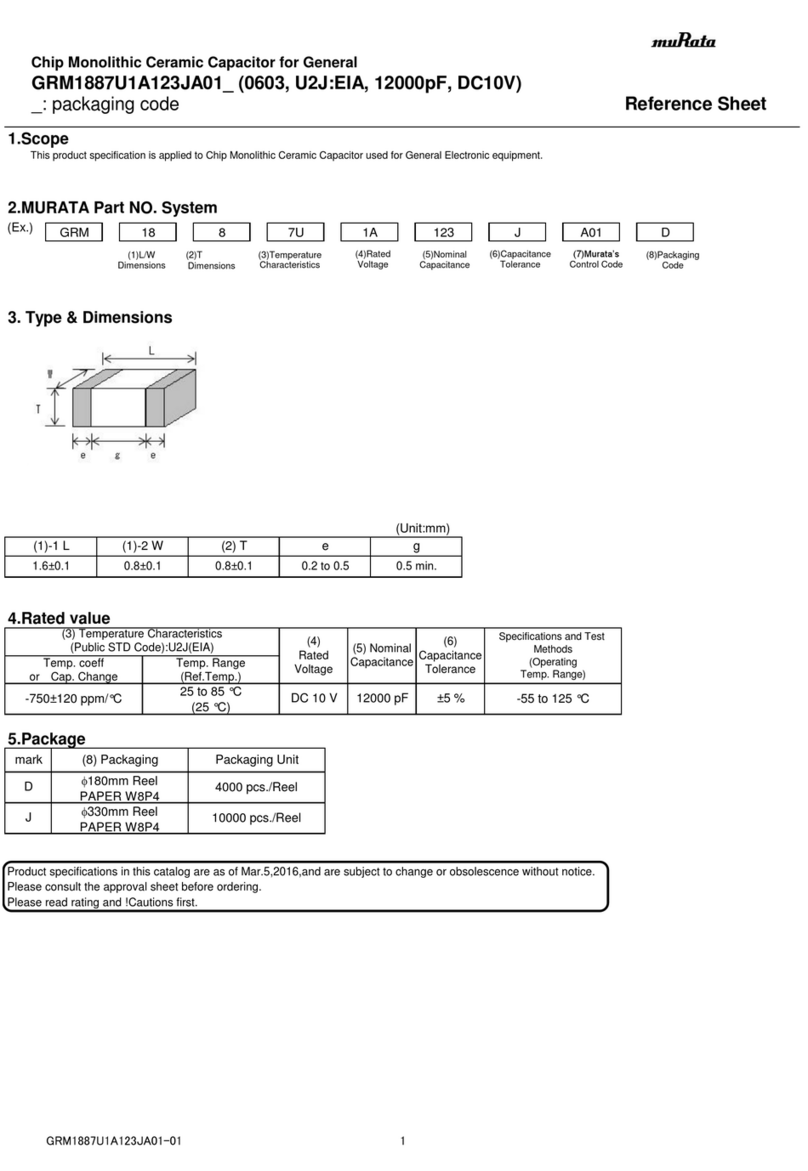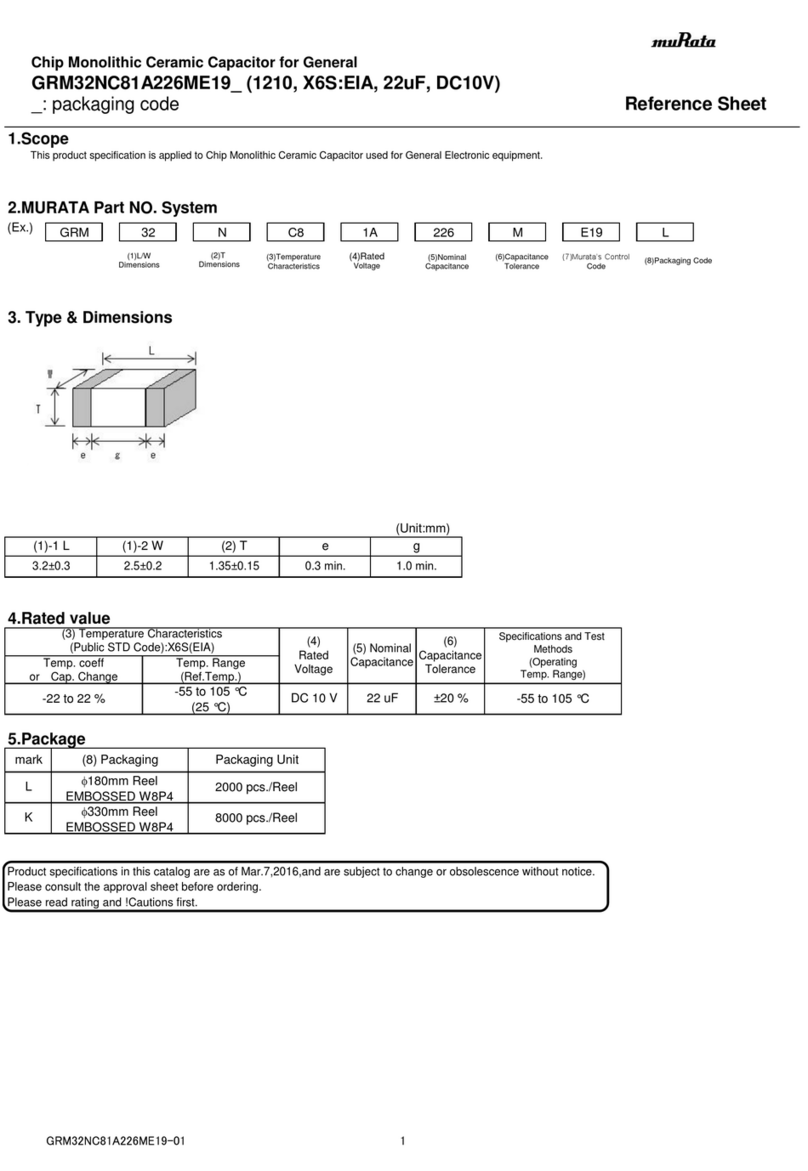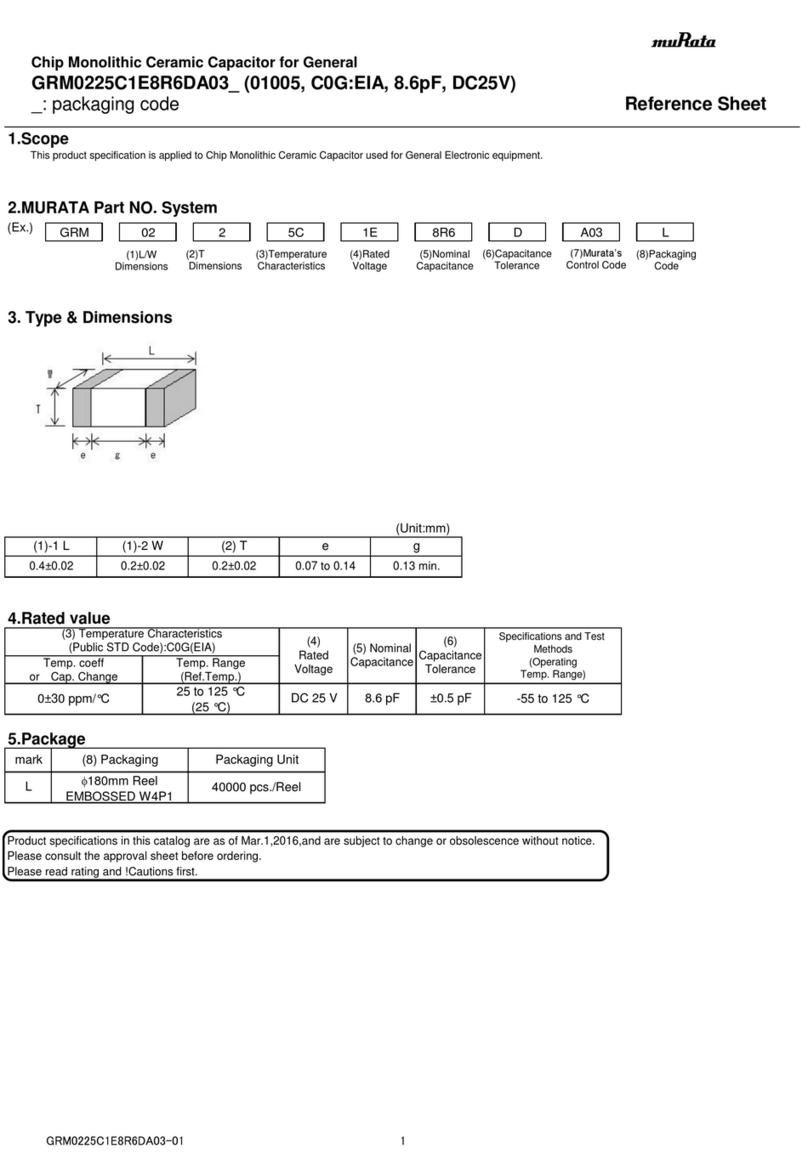Flintec CCWR User manual

Doc No.0096489 Page 1of 29 V1.2 Issued 17 Aug 2020
User Manual
CCWR

Doc No.0096489 Page 2of 29 V1.2 Issued 17 Aug 2020
Contents
1. Product Description...........................................................................................................3
1.1. Accessories................................................................................................................3
1.2. Optional Accessories ..................................................................................................3
2. Mounting Instructions .......................................................................................................4
2.1.
Base Unit
...................................................................................................................4
2.2. Antenna Recommendations ........................................................................................6
2.3.
Base Unit Connections
................................................................................................8
2.4.
Remote Unit (Wireless Load Cell)
.................................................................................9
2.4.1. Connect Load Cell to Remote Unit .......................................................................10
3.
Battery Installation
..........................................................................................................13
4. Equipment Maintenance..................................................................................................14
5. Operation .......................................................................................................................15
5.1.
Base Unit Channel Selection
......................................................................................16
6. Technical Specification.....................................................................................................18
7. Markings ........................................................................................................................20
7.1. Remote Unit (Transmitter) ........................................................................................20
7.2. Base Unit (Receiver) .................................................................................................20
Ordinary Location Markings...........................................................................................20
8. Product Dimensions.........................................................................................................21
8.1. Generic Load Cell......................................................................................................21
8.2. Remote Unit ............................................................................................................22
8.3. Base Unit.................................................................................................................23
9. Safety Information ..........................................................................................................24
9.1. Intended Usage........................................................................................................24
9.2. Lithium Batteries......................................................................................................24
9.3. Maintenance Safety .................................................................................................24
9.4. X-Mark Conditions....................................................................................................25
10. FCC Certification Statement..............................................................................................26
11. ISED RSS-Gen Notice........................................................................................................27
11.1. IC Certification Statement..........................................................................................27
12. RF Exposure Notice..........................................................................................................28
12.1. FCC & ISED Canada RF Exposure Notice ......................................................................28
12.2. Avis d'exposition FCC et ISDE Canada RF.....................................................................28
13. CCWR Control Drawing 0090977 .......................................................................................29

Doc No.0096489 Page 3of 29 V1.2 Issued 17 Aug 2020
1. Product Description
The CCWR is a wireless variant of our CC1 pump-off control load cell. The CCWR in conjunction
with an appropriate load cell can transmits polished rod load wirelessly, which solves the
industry wide problem of cable failures. After months of development in the field, working
hand-in-hand with end users, our design addresses the most demanding concerns raised.
The CCWR technology sets our product apart from all wireless products currently available in the
market. The primary advantage is extremely low power consumption. Despite the low power
consumption, the product can deliver a continuous flow of data, high signal strength and long
battery life. We also offer position sensing capability which is synchronized with the load
measurement. This eliminates the need for Hall effect sensors or inclinometers with costly
maintenance associated. The wireless enclosure also incorporates an independent
compartment for both the wireless technology and the battery. This allows for easy, single
handed access to the battery for replacement in the field. We carefully specified a pre-wired D-
cell battery is inexpensive and commercially available worldwide.
•Continuous Flow of Data: 100 Readings per Second.
•Low Power Consumption: 12-18 month Battery Life.
•High Signal Strength: > +12dBm, 30m-300m Transmission.
•HazLoc Approved: UL Rated Class 1, Division 1 environments (see label for full approval).
•On-Board Position: ±2% Accuracy
•Security: Proprietary Wireless Transmission Protocol
•Ease of Use: Independent Battery Access, Commercially Available Battery.
•Weatherproof: IP67 rating, Rated for use in -70°F to 175°F (-55°C to 80°C).
1.1.Accessories
•Base Unit (Receiver).
•Antenna.
•Extension Cable.
•Magnetic Cable Clamps (4x).
•Remote Unit (Transmitter).
•Lithium Battery.
•User Manual.
1.2. Optional Accessories
•P/N 52-0093380 – Pole Mount U Bolt Bracket.
•P/N 52-0089758 – DIN Rail Mounting Bracket.

Doc No.0096489 Page 4of 29 V1.2 Issued 17 Aug 2020
2. Mounting Instructions
IMPORTANT
The employees responsible for the equipment, installation and verification must take into
consideration all the actions concerning this subject specified in IEC 60079-14:2013 ed. 5.0
(Electrical installations design, selection and erection) standard. In addition to general
specifications associated with any system installed in hazardous locations, special attention
should be paid for specific requirements regarding intrinsic safety.
2.1.
Base Unit
The base of the device comes with a magnet to the rear for easy mounting to a metal surface
inside or outside of the pump controller cabinet. The base mounts outside the hazardous area
and is not intended to meet hazardous location safety standards. The antenna must be fitted
with the band-pass filter, as this forms part of the FCC/IC radio approvals.

Doc No.0096489 Page 5of 29 V1.2 Issued 17 Aug 2020
If the magnetic base is not directly attached, due to a non-metallic surface (or space
constraints), the base can be suitably fastened to any structure using brackets, plates or other
type of support.
_________________________________________________________________
IMPORTANT In order to achieve the best performance the antenna attached to the top
right corner of the base unit must be perpendicular/horizontal to the antenna polished rod as
shown in the above images.
_________________________________________________________________
You many optionally use an extension cable to mount the antenna. Make sure the RF filter is
connected directly to the base unit.
DIN rail mount
Pole mount with U-Bracket

Doc No.0096489 Page 6of 29 V1.2 Issued 17 Aug 2020
2.2. Antenna Recommendations
Omni Directional Antenna
CCWR base unit is equipped with an
omni-directional antenna to provide
the widest possible signal coverage.
RP-SMA Connector (Female)
The antenna is provided with a
threaded, weatherproof RP-SMA
female connector. This connector
must be properly tightened to the
male connector on the enclosure.
Vertical Alignment
Perpendicular/horizontal alignment
of the antenna, relative to the
polished rod is essential.
Line-of-sight
Is important to find, whenever
possible, a line of sight with the load
cell where minimal obstacles reside
along the RF path.
Note: Fresnel Zone, the area around
the visual line-of-sight that radio waves
spread out into after they leave the
antenna must be clear as possible.
Obstacles may weaken signal strength.
Antenna Height
The base unit antenna can be
positioned flexibly using the
antenna extension cable.
Mounting the antenna at a
higher position to the base
may help achieve better
propagation.
Note: The use of extension
cables that always represent
attenuation and signal
strength losses should be
avoided if possible.
Antenna Mating
The recommended torque
setting for the antenna/band-
pass filter is 5lbs (0.56Nm).

CCWR - User Manual
Doc No.0096489 Page 7of 29 V1.2 Issued 17 Aug 2020
Enclosure Mounting

CCWR - User Manual
Doc No.0096489 Page 8of 29 V1.2 Issued 17 Aug 2020
SIGNAL CABLE
COLOR CODE
RED Excitation + / Vref +
GREEN mV/V Signal + / mA +
WHITE mV/V Signal - / mA -
BLACK Excitation - / Vref -
YELLOW Shield (NC)
GRAY Optional analog
VIOLET Ground
POWER CABLE
COLOR CODE
BLACK Ground
YELLOW Shield
RED 12 to 24VDC
2.3.
Base Unit Connections
WARNING: Insulate unused leads to prevent shorting.

CCWR - User Manual
Doc No.0096489 Page 9of 29 V1.2 Issued 17 Aug 2020
2.4.
Remote Unit (Wireless Load Cell)
CCWR is mounted in the same way as other polished rod load cells.No special mounting
procedure is required.
________________________________________________________________
IMPORTANT
Position the remote unit (with the Flintec logo upright on the plastic enclosure).
________________________________________________________________

CCWR - User Manual
Doc No.0096489 Page 10 of 29 V1.2 Issued 17 Aug 2020
2.4.1. Connect Load Cell to Remote Unit
1. Loosen the 3 retaining screws.
2. Insert the load cell adaptor (3/4-14 NPT) and keep free/loose from the assembly.

CCWR - User Manual
Doc No.0096489 Page 11 of 29 V1.2 Issued 17 Aug 2020
3. Mate the CCWR cable connector to the connector inside the load cell.
4. Fit the load cell adaptor to the load cell over the cable and tighten with a hand tool.

CCWR - User Manual
Doc No.0096489 Page 12 of 29 V1.2 Issued 17 Aug 2020
5. Push the remote assembly into the load cell adaptor, making sure the remote module is
level with the load cell and battery compartment. To prevent damage from moving parts
like rod rotator arm ensure the assembly is as shown below.
6. Final step, tighten the set/retaining screws.

CCWR - User Manual
Doc No.0096489 Page 13 of 29 V1.2 Issued 17 Aug 2020
3.
Battery Installation
CCWR remote unit is powered by a primary cell battery and must be fitted suitably in the battery
compartment. The person in charge of the installation must verify the battery undamaged or
wet.
WARNING: This product is certified for use with TADIRAN TL-5930/F. Ensure the battery cable is
tucked inside the compartment to prevent the cable being compressed when closing the door.

CCWR - User Manual
Doc No.0096489 Page 14 of 29 V1.2 Issued 17 Aug 2020
4. Equipment Maintenance
The only live maintenance permitted for this product is replacement of the battery pack which
must be done in non-hazardous areas.
Health and safety standards in the workplace must be strictly observed for all personnel
conducting maintenance tasks.
This manual must be read and carefully kept. The manual should be referenced before conducting
any fitment or maintenance tasks.
Battery
Replacement
CCWR remote unit (transmitter) is powered from a specific battery.
•TADIRAN – TL-5930/F
WARNING – Do not replace battery when an explosive atmosphere is present
Procedure
1. Open the battery compartment by loosening the battery doorknob.
2. Unplug the battery connector from housing by releasing the locking tab and pulling the
connectors apart.
3. Remove the battery (dispose of battery in accordance with the manufacturer’s instructions).
4. Insert a fresh battery and connect to the remove unit by mating the connectors.
5. Route the excess cable (inside the battery compartment) as to not cause any signs of cable
pinching or compression.
6. Close the door and lock with the doorknob. Ensure the sealing gasket is properly seated in
the locating groove.
IMPORTANT
Please refer to battery manufacturer, TADIRAN’s guidelines (LTN0111) for disposal of Lithium
batteries.

CCWR - User Manual
Doc No.0096489 Page 15 of 29 V1.2 Issued 17 Aug 2020
5. Operation
1. Disconnect or remove the power to the base unit.
2. Ensure the base antenna is connected with an RF filter.The RF filter must always be
mounted on the base
3. The remote antenna is installed by the manufacturer; to preserve safety certifications, it is
not intended to be removed.
4. Ensure the manufacturer supplied battery is connected to the remote unit.
5. The remote unit indicator LED, if viewable, will flash about twice per second.
6. Connect or apply power to the base unit.
7. The base and remote will connect on the last-used radio channel in about a second.
8. If the base is set to use an alternative channel, it will automatically switch the remote to
the new channel. This will take a few seconds to reconfigure.
9. Normal operation begins.
10. A reconstructed version of the mV/V nominal load cell output will appear at the base
output (for mA variant this is a 4-20mA current loop).
11. If radio interference occurs, an alternative channel may be selected.

CCWR - User Manual
Doc No.0096489 Page 16 of 29 V1.2 Issued 17 Aug 2020
5.1.
Base Unit Channel Selection
•To remove the base units top cover, use a crosshead screwdriver to remove the four
screws.
•Use a small flat-head screwdriver to rotate the rotary channel selection switch to the
appropriate channel required. This is not normally required, however, if there is
significant RF traffic on that channel, changing to another may be necessary.
•When replacing the lid, care must be taken to ensure the light pipes are not damaged and
the sealing gasket around the lid is maintained.
WARNING: If access to the PCB is necessary, gently lift the lid/cover off the base
part of the housing (to prevent damaged to the 3 LED light tubes attached to the
cover).

CCWR - User Manual
Doc No.0096489 Page 17 of 29 V1.2 Issued 17 Aug 2020
Channel Selector Switch

CCWR - User Manual
Doc No.0096489 Page 18 of 29 V1.2 Issued 17 Aug 2020
6. Technical Specification
CCWR Retrofit Wireless System Technical Specification
Typical System Specifications with Flintec CC1 &
CC3
Variants/Capacities
lb
30k & 50k
Rated Load Output (RO)
mV/V
2.00 ± 0.5%
Rated Position Output
% FS (Stroke)
± 2
Non-Repeatability
% RO
± 0.1
Static Error Band
% FS Max
± 0.5
Compensated Temperature Range
°F (°C)
-14° to 150° (-25° to 65°)
Safe Operating Temperature Range
°F (°C)
-70° to 175° (-55° to 80°)
Temperature Effect on Zero
% RO/°F Max
± 0.0075
Temperature Effect on Output
%RO/°F Max
± 0.005
Zero Balance
% RO Max
± 1
Weight, (Appr. Remote Unit + LC e.g. CC1)
lb Nom.
4.5
Fatigue Rating (compression)
Cycles Min@Capacity
50,000,000
Shock Rating
g
Up to 500g
Vibration Rating
MIL-STD-810G
514.6; 516.6
Load-Cell Requirements
Rated Load Output (Nominal RO)
mV/V
2
Excitation Voltage
V
+5V
DC
to +10V
DC
Insulation Resistance (100V
DC
)
MΩ
≥ 500
Bridge Resistance
Ω
≥ 350
Protection According to EN 60529
IP67

CCWR - User Manual
Doc No.0096489 Page 19 of 29 V1.2 Issued 17 Aug 2020
Electronics Specification
Remote and Base Transceiver Units Matched
Mac ID
(32bit) Specific; No External
Connection - Paired Unit
Data Rate
Readings/Sec
100
Radio Frequency Band
GHz
2.45
Radio Channels
Selectable (*)
14
Telemetry Range
Feet (Meters) (*)
100 - 1000 (30-300)
RF Power Output (Remote Unit)
dBm (*)
13-15.5
RF Power Output (Base Unit)
dBm (*)
12.5-14
Remote Unit Battery Life
Min @ 100 rps
(**)
12 to 18 months
Remote Unit Battery Type
Lithium D-Cell, 3.6V
DC
, 19Ah
(TL-5930/F).
Compensated Temperature Range
°F (°C)
-14° to 150° (-25° to 65°)
Operating Temperature Range
°F (°C)
-70° to 175° (-55° to 80°)
Base Unit
Power Supply
VDC, mA
12 - 24; Min. 250mA
Virtual Excitation (External Ref) Voltage
VDC
4.8-10.1 (Ref 5 ± 0.05)
Virtual Bridge Resistance
Ω
700
Protection According to EN 60529
IP67 or higher
(*) 2-3dBm; Telemetry range will change according to site RF Channel Settings
(**) Battery Life changes as per RF output; latency; Temp; antenna distances etc. Refer to
Manufacturer for details.

CCWR - User Manual
Doc No.0096489 Page 20 of 29 V1.2 Issued 17 Aug 2020
7. Markings
7.1. Remote Unit (Transmitter)
Equipment Group II All areas except Mines.
Equipment Category & Enviro 1G Gas, Vapor, Mist.
Explosion Protection Ex Conformity with some IECs protection modes.
Protection Type ia Intrinsic security “ia” protection mode
than mines. Gases Groups.
Temperature Class T4 Max surface temp 135°C (275°F).
Equipment Prot Level (EPL) Ga Gas Atmospheres. Very high level of protection.
7.2. Base Unit (Receiver)
Ordinary Location Markings
-Maximum Operating Temperature: 80°C accordingly.
-Maximum Humidity: 95 % without moisture condensation.
-If the equipment is used in a manner not specified by the manufacturer, the
protection provided by the equipment may be impaired.
-Maximum Altitude: 2000 Meters
Label
Label
Other manuals for CCWR
1
Table of contents
Other Flintec Industrial Electrical manuals
Popular Industrial Electrical manuals by other brands

Murata
Murata GRM188R71C563KA01 Series Reference sheet
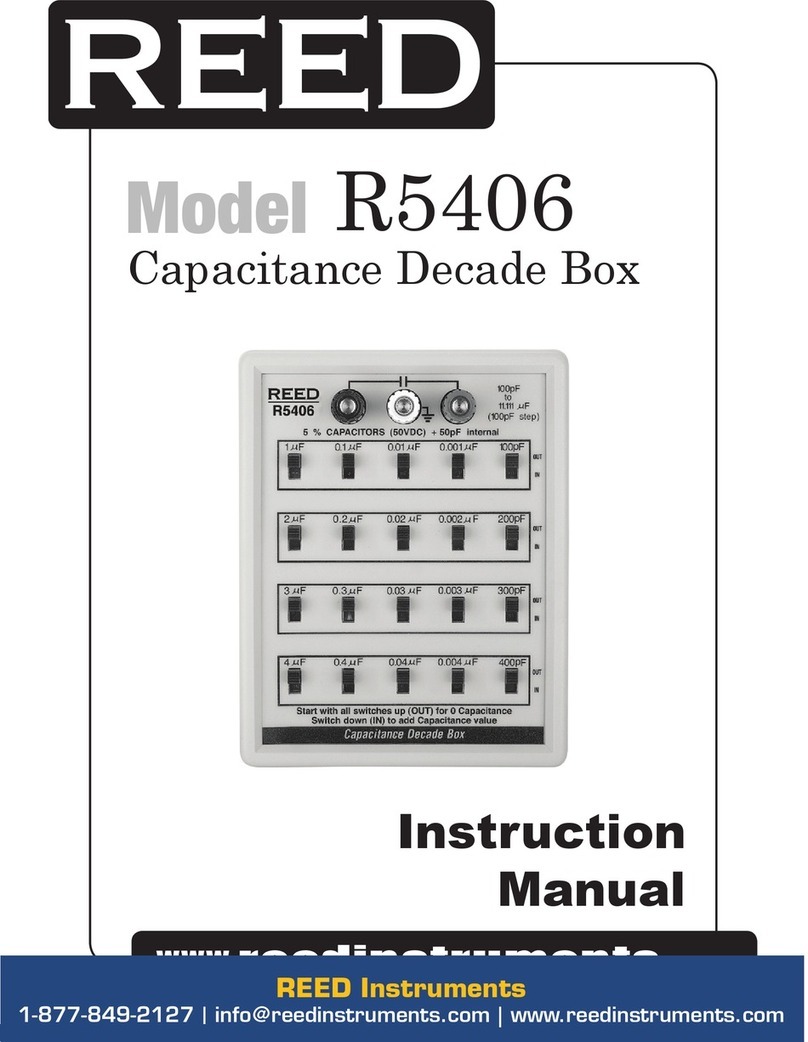
REED
REED R5406 instruction manual
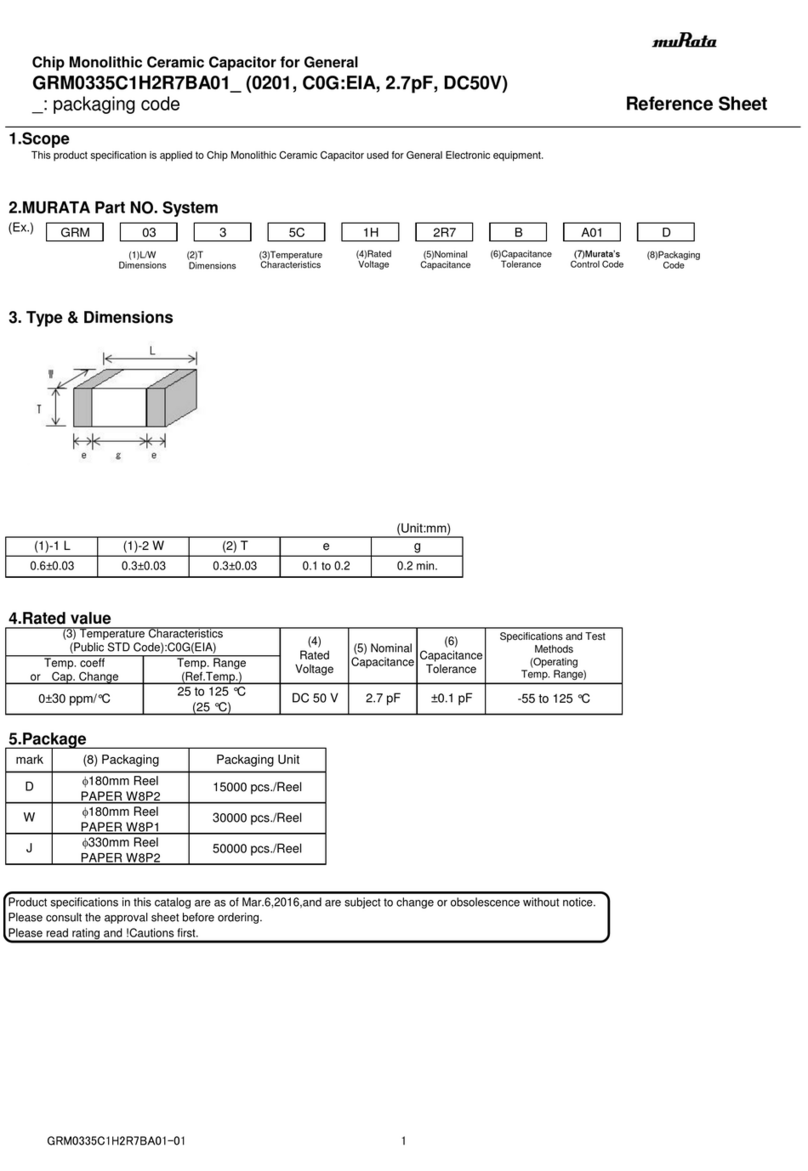
Murata
Murata GRM0335C1H2R7BA01 Series Reference sheet
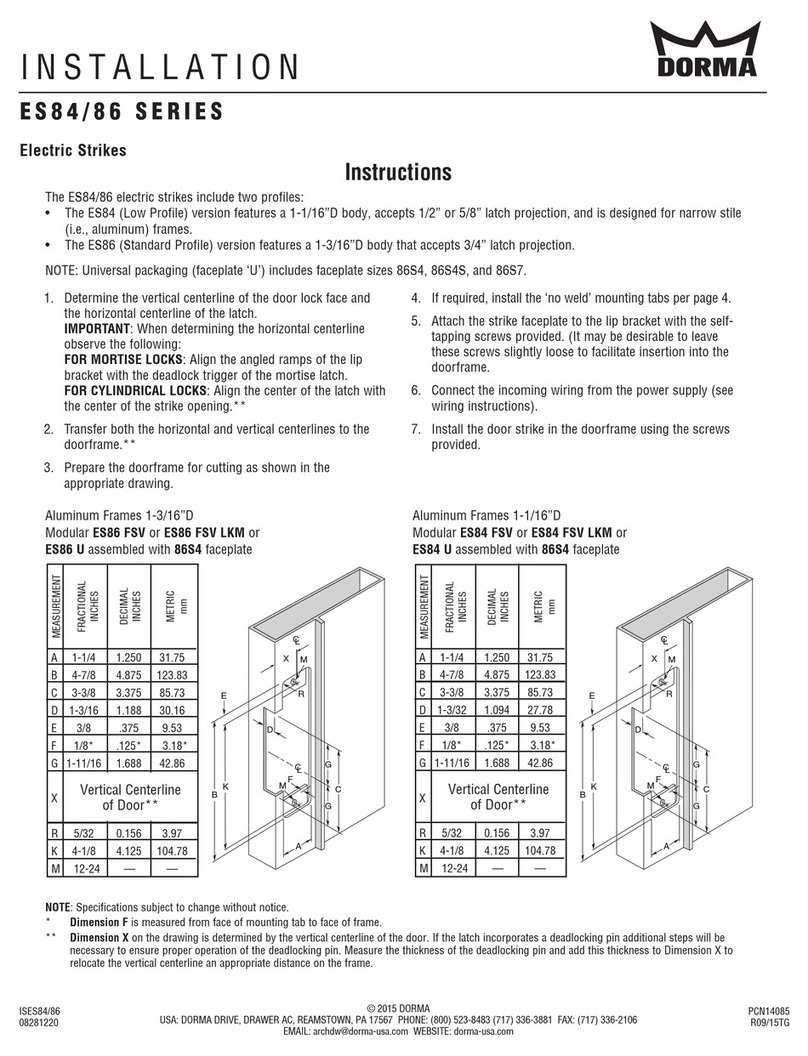
Dorma
Dorma ES84 Series installation instructions

AutomationDirect
AutomationDirect DURA PULSE GS-2DBU user manual
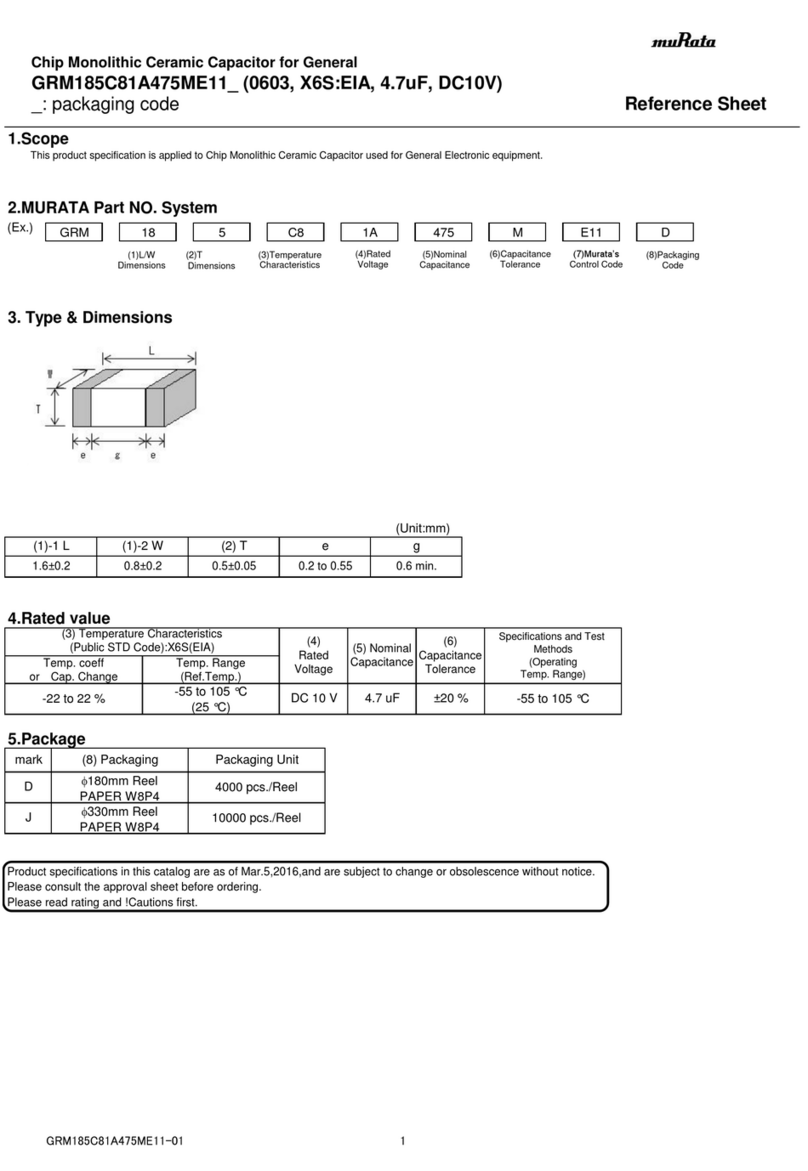
Murata
Murata GRM185C81A475ME11 Series Reference sheet
